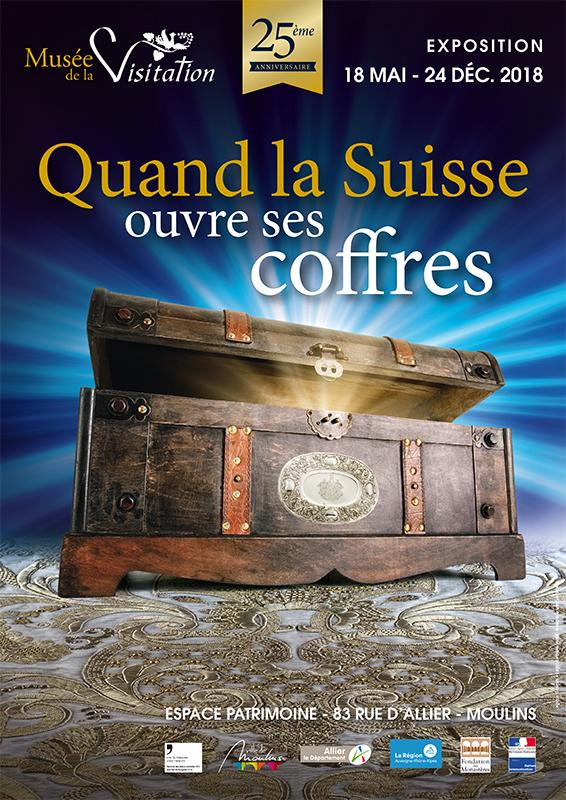 In an exhibition in Moulins, France, and in a thick catalog of 320 pages, the monastery of the Visitation of Fribourg presents the most important pieces of its artistic heritage. Embroidery, clothing and liturgical objects, oil paintings as well as everyday objects, some 2,000 pieces have been listed.
In an exhibition in Moulins, France, and in a thick catalog of 320 pages, the monastery of the Visitation of Fribourg presents the most important pieces of its artistic heritage. Embroidery, clothing and liturgical objects, oil paintings as well as everyday objects, some 2,000 pieces have been listed.
Under the title “When Switzerland opens its coffers”, the museum of the Visitation in Moulins, France, presents, on the occasion of its 25th anniversary, from May 18 to December 24, the treasures of the sacristy of the monastery of the Visitation of Friborg, in particular a wide range of liturgical ornaments from the 17th to the 20th century. Carved in precious silks, embellished with gold, silver and silk embroidery, some of these facings were made by the Visitandines themselves.
This exhibition is the result of a close collaboration between the Visitandines of Friborg, the Department of Cultural Properties of the State of Friborg and the Museum of the Visitation of Moulins who together produced the book that accompanies the event and presents the history of the community and its heritage.
Installed in Friborg since 1635
Installed at the rue de Morat in Friborg since the beginning of the 17th century, the nuns of the Visitation have piously preserved the works and objects of art acquired over the centuries. “We were fortunate to be the first generation to be able to dive into the monastery’s archives. It was a real discovery. The state of conservation of objects is better there than in some museums, “La Liberté Aloys Lauper, deputy head of the Department of Cultural Property of the Canton of Friborg, and co-director of the book, told La Liberté.
This memory work, encouraged by the Sisters, began with a systematic census. Nearly 2,000 objects have been documented and photographed, from precious liturgical objects to the services of tables and kitchen utensils, from devotional objects to hourglasses to everyday life, to furniture.
The work of memory realized allows a historical lighting which goes beyond strictly religious. “The archives of the monastery contain a wealth of information on the condition of women between the seventeenth and nineteenth century. For example, some sisters mention the fact that before entering the monastery, they were promised good marriages with men they did not like and who were known to be violent. They also say that living behind the walls of the monastery was a protection against the violence of the time. Outside, there were diseases, the plague, wars, “says Aloys Lauper.
Source: https://www.cath.ch/newsf/la-visitation-de-fribourg-presente-ses-tresors/